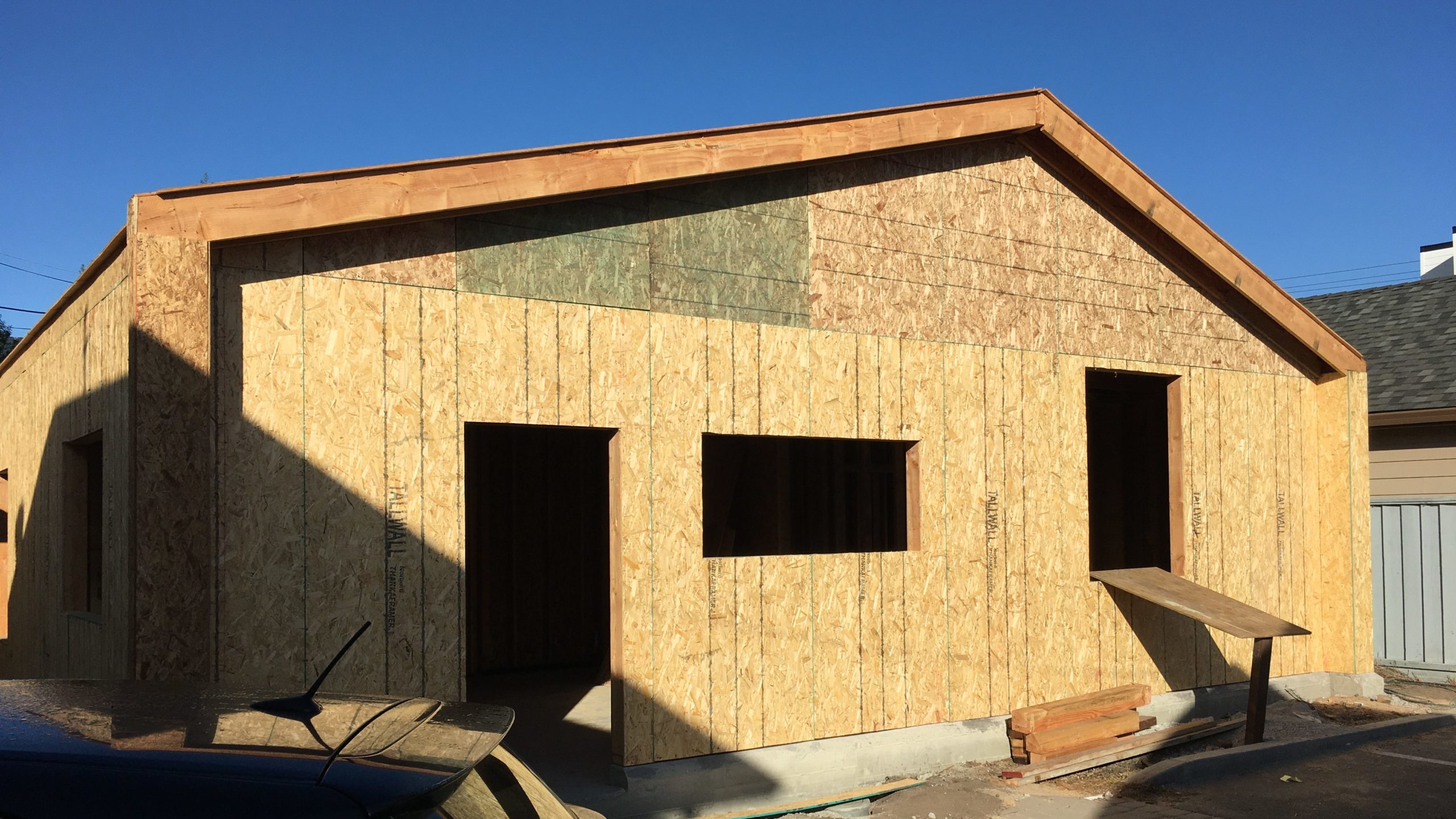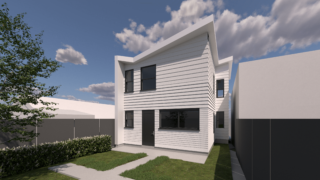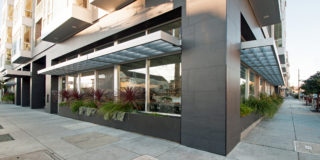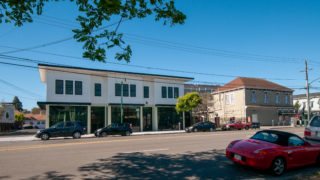KWAN DESIGN ARCHITECTS
is a San Francisco architecture firm, practicing user centered design for commercial and residential projects.
RESIDENTIAL PROJECTS
COMMERCIAL PROJECTS
STORIES
Convert Office Buildings to Residential
09.02.2025
Converting office buildings to residential use is a way to reimagine & revitalize City. However, the process is complex with many challenges. The following are key points for considerations.
Natural Light & Ventilation: Modern office towers have large & deep floor plate approximately 22,000 to 30,000 SF with fix windows at the perimeters, while residential design needs to provide natural light & ventilation with operable windows. A solution could be to carve a courtyard from the existing building to provide common open space & additional light & ventilation to residential units. A smaller floor plate has the advantage of not needing to carve the existing building for natural light.
Heating & Cooling: Modern office towers use large, centralized heating & cooling systems. Residential units need individualized climate control for each unit.
Electrical & Gas: Electrical systems must be re-routed from a few large meters to many individual smaller meters. Gas lines for cooking & heating may need to be installed where they didn't exist before.
Plumbing: Modern office towers have core restrooms on each floor, with plumbing stacks running vertically. Residential projects need individual water supply & waste lines for every kitchen and bathroom. Running new pipes horizontally across a floor plate and connecting them to the central core or new plumbing shaft often requires lowering ceilings, and structural penetration.
Accessibility: The conversion must meet all requirements for accessibility, which may require installing ramps, wheelchair lift, and adding accessible bathrooms in units.
Conclusion: Older buildings with smaller floor plates (3,000 to 10,000), high ceiling, and operable windows are features that are more suitable for a successful conversion & the result can be incredibly rewarding. Kwan Design Architect can assist you in this very specialized development that requires careful analysis & implementation.
Accessory Dwelling Units
08.29.2024
ADU, Accessory Dwelling Unit or JADU, Junior Accessory Dwelling Unit is a way to provide additional housing on single or multi-family lots. Its intention is to provide affordable housing options for renters, family members, the elderly, or caregivers. It can also help 1st time buyers to increase income to afford a new home. The following are some key points on ADU regulations:
Number of ADU allow - Under state law, you can provide (1) ADU and (1) JADU per lot, within the proposed or existing single-family dwelling, if certain conditions are met. For multi-family buildings, state law allows up to 25% of the unit count;
In San Francisco, if (4) or less legal dwelling units are on a lot, only (1) ADU is allowed. If (5) or more legal dwelling units are on a lot, then an unlimited number of ADUs are permitted within the existing building. Then, the determination on the number of ADUs will depend on the S.F. Building Code for the abilities to provide natural light, ventilation, and two exits.
Size of the ADU - Under state law, the maximum size of a detached ADU is 1200 sq.ft. for more than one bedroom; local city requirements may vary. For example, the City of Millbrae is 1000 sq.ft. maximum for a detached ADU of more than one bedroom;
Size of the JADU – Under state law, the maximum size of a JADU within the primary dwelling is 500 sq.ft.; local city requirements may vary.
Density Limit - Adding an ADU does not change the allowable density limit of the lot.
Short-term Rentals - ADU cannot be used as short-term rentals.
ADU owner occupancy requirement – Owner occupancy is not required on ADUs, which means both the primary dwelling and the ADU can be rented.
JADU owner occupancy requirement - Owner occupancy is required at the primary dwelling or the JADU.
Height Limits – State law height limit is 16 feet for a detached ADU; In San Francisco, if the lot has an existing or proposed single or multi-family dwelling that is within ½ mile walking distance of a major transit stop, then, the height limit can be 18 feet. In San Francisco, an attached ADU height limit is 25 feet.
Other items to consider for Statewide ADU - The rear & side setback are 4’ from the property line; Lot size, lot coverage, floor area ratio, & open space requirements are exempt for ADU up to 800 s.f. and 16 feet high.
Unit Legalization - In San Francisco, there is also a unit legalization program to help you legalize an in-law unit without the ADU process. In that process, the unit needs to be existed prior to January 1, 2013.
The information provided is for general reference; Every site has unique challenges, we have the training and experience to help you decide if an ADU makes sense for you from a cost, benefit & lifestyle point-of-view. If you think an ADU makes sense, we can help you to explore design options.


Building Permit Questions
08.28.2024
Safety is the primary reason for building code regulations
The building permit process is a way for the city to regulate the building codes. A building permit is needed for all renovation and new construction. In many cases, a building permit is also needed for repair or replacement of existing fixtures, such as windows replacement. A mechanical, electrical or plumbing permit maybe needed for changes or addition to the existing mechanical, electrical or plumbing system; for example, moving or adding an electrical outlet or a plumbing fixture requires a permit. Most building permits need drawings submitted to the city to show the improvements and the type of construction being proposed. Once the permit is issued, you're required to build the project and if any changes are made to the work, it must be made with the City's approval. Some permits can be issued over-the-counter while other permits require additional time for reviews. In San Francisco, a building addition permit can take approximately 24 months. Building codes were created for safety reasons. If you perform work without permit, then, it is a violation of codes and you will be subject to fines and penalties. You will also require to obtain permits for the work created and if the work does not comply with codes, you will have to demolish the work.
Some common building code questions
Opening or Windows - Generally, openings such as windows are not allowed within 0 to less than 3 feet from the property line, unless the windows are facing a street or back yard. Limited windows areas are allow from 3 feet to less than 5 feet. For residential projects, openings are not limited when they are located at 5 feet or greater from the property line.
Ceiling Height - Generally, the minimum ceiling height is 7'-6"; Bathrooms, toilet rooms, kitchens, storage rooms and laundry rooms shall be permitted to have a ceiling height of not less than 7 feet.
Egress Window - The size of bedroom window for emergency escape in a wood frame non sprinkler residential buildings should have a minimum net clear open area of 5.7 square feet. The minimum net clear opening height shall be 24 inches. The minimum net clear opening width shall be 20 inches.
Natural Ventilation - The minimum net openable window to the outside is 4 percent of the area of the room.
Natural Light - The minimum net glass area is 8 percent of the floor area of the room.
Heating - Spaces for human occupancy shall be heated & maintain a minimum indoor temperature of 68°F at a point 3 feet above the floor.
Building Expansion
If you plan to expand your building, consider the following questions.
A. Will the expansion trigger additional parking? Most cities prefer to hide or recess the garage door. Some cities will allow one parking at the existing front landscape area as long as a percentage of landscape area remains, approximately 25%.
B. Has the building reached its maximum allowable size or floor area ratio (FAR)?
1. In City of Millbrae, R-1 single family zone, the allowable area is 55% of the lot area.
2. In San Francisco, the height limits & horizontal setbacks take more precedence over Floor Area Ratio. All San Francisco residential RH zone areas have a rear setback of 30% of lot depth.
3. In City of Sunnyvale, a single family house in R-0, R-1 and R-2 zone is 45% of the lot area.
4. In the City of Burlingame, the maximum lot coverage is 40% for single family lots.
C. Has the building reached its maximum allowable height limit? Most single family zones in San Francisco have a height limit of 35 feet. Most of the other neighboring cities are approximately 30 feet.
Works exempt from permit per 2022 California Building Code.
Please note individual city may have their interpretation & variation of the California Building Code.
1. One-story detached accessory buildings used as tool and storage sheds, workshops, playhouses and similar uses, provided the floor area is not greater than 120 s.f. I suggest that if the structure has a roof overhang, then, the projected roof area shall not be greater than 120 s.f.
2. Fences not over 7 feet high. For San Francisco, any fence not over 6 feet at the side or rear of the property & 3 feet in height along the front of the lot. Click Here for more information for fences in San Francisco.
3. Retaining walls that are not over 4 feet in height measured from the bottom of the footing to the top of the wall. If this wall is supporting a surcharge, then it will require a permit.
4. Painting, wallpapering, tiling, carpeting, cabinets countertops and similar finish work. Painting with scaffolding will most likely need a permit especially if the scaffolding is on the sidewalk or public right of way outside your property.
5. Prefabricated swimming pools in 1 & 2 family dwellings in which the pool walls are entirely above, the pool is less than 24” deep and if the capacity does not exceed 5,000 gallons.
6. Shade cloth structures constructed for nursery or agricultural purposes, not including service systems.
7. Swings & other playground equipment accessory to detached 1 & 2 family dwellings.
8. Window awnings in 1 & 2 family dwellings & U occupancies, supported by an exterior wall that do not project more than 54 inches from the exterior wall and do not require additional support.
9. Non Fixed & movable fixtures, cases, racks, counters & partitions not over 5 feet 9 inches in height.







